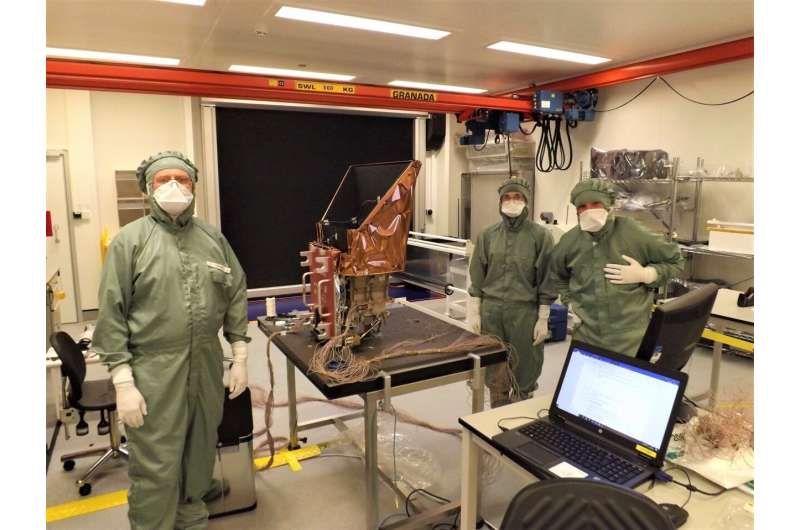Specialists will subject the prototype to the significant vibrations, shocks and G-forces experienced during launch of the spacecraft, as well as the extreme temperatures it must operate at in space below -150oC.
Dr. Steven Sembay, Principal Investigator (PI) for the SXI instrument, based at the University of Leicester, said:
"The STM testing is always a slightly nervous time, especially when you see videos of how much the instrument is shaken during testing!
"It is the first time you go from conceptual design in computer models to a real object in metal. I shouldn't have worried. It is a testament to the skill of our engineering and manufacturing team that what is a complex piece of kit works as predicted."
The SXI consortium is led by the University of Leicester in collaboration with UCL Mullard Space Science Laboratory (UCL MSSL), the Open University and European partners.
UCL MSSL is responsible for building the electronics that operate the SXI detectors and retrieve the signals that produce X-ray images of the space around the Earth.
The UK Space Agency has committed £10.5 million in funding for UK leadership roles on SMILE, including the SXI instrument. The compact X-ray telescope is the only European instrument planned for the mission.
SMILE is the first joint project between the European Space Agency (ESA) and the Chinese Academy of Sciences (CAS) from conceptual design to operations, and will study the continuous stream of charged particles emitted by our Sun.
Professor Graziella Branduardi-Raymont of UCL MSSL, European Co-Principal Investigator for the mission, said:
"One of the most interesting aspects of SMILE SXI is the fact that we are using technology so far applied for looking outwards to X-ray sources in the far Universe to study how our own Earth responds to the impact of the Sun's activity."
The highly variable stream of high energy particles, called the solar wind, impacts on the Earth's magnetic field. At times of high intensity this stream can be a hazard to space-based instrumentation or even, in rare cases, ground-based electrical systems.
Fortunately, the Earth's magnetic field provides protection, but this compresses and expands as it responds to variations in the highly dynamic solar wind.
SXI will continuously monitor the position of the boundary between the region of space controlled by the Earth's magnetic field and the solar wind. Its images will, in conjunction with the other instruments on SMILE, help scientists to refine models of how this Sun-Earth connection responds to the most infamous example of so-called 'space weather'.
Dr. Caroline Harper, Head of Space Science at the UK Space Agency, said:
"Space weather—such as the solar wind—has the potential to disrupt satellites we rely on every day for services such as global communications or managing power grids.
"This mission is a prime example of how, by working with our international partners, the UK is doing innovative science in space, while underpinning the broader economy by supporting the development of real-world applications, such as space weather modeling. It is fantastic to see the first full model of the SXI instrument being delivered and we look forward to the completion of the engineering model and eventually the flight instrument, over the next two years."
SXI weighs around 36 kg and needed to be compact and relatively low mass to meet the mission level requirements of the spacecraft. To achieve this the telescope employs a very lightweight optical system to focus X-rays; a 'lobster-eye' lens which mimics the mechanism within the eye of a crustacean.
The University of Leicester's Space Research Centre is a world leader in the development of X-ray instruments for space and SMILE's SXI is the third instrument to use similar optics to be built at Leicester following the Mercury Imaging X-ray Spectrometer (MIXS) instrument on ESA's BepiColombo, which has recently successfully completed its first fly-by of destination planet Mercury, and the soon-to-be-launched MXT instrument on the French-Chinese SVOM mission.
Explore further



